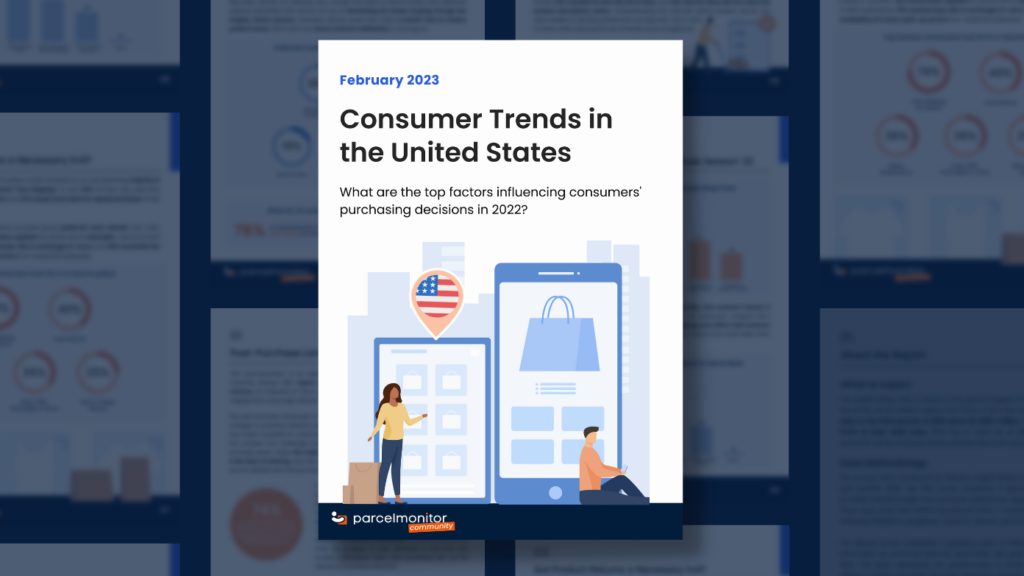Understanding the emerging trends that shape consumer behavior is paramount for businesses seeking to stay ahead in a highly competitive market. From shifting preferences and digital transformation to sustainability and social responsibility, Parcel Monitor’s report takes a comprehensive look at the key consumer trends that have influenced the American consumer market in recent years. Key findings of the report are as follows:
Post-purchase environment in the US
The post-purchase landscape in the US is in a constant state of flux, driven by shifts in consumer behavior and technological progress. The advent of e-commerce has revolutionized the way customers receive their purchases, presenting both new opportunities and challenges for businesses operating in the post-purchase space. Nowadays, customers have come to expect swift delivery within a few days of placing an order, as well as a hassle-free return process in case of dissatisfaction.
To meet these evolving expectations, businesses have embraced innovative technologies and streamlined processes to optimize their post-purchase operations. Many retailers now offer complimentary shipping and returns as standard practice, aiming to enhance customer satisfaction. Furthermore, investments have been made in shipment tracking systems and delivery notifications, enabling customers to monitor their orders in real time and receive updates when items are out for delivery or have been successfully delivered.
Despite the progress made, the post-purchase landscape remains a challenge for businesses to navigate. Issues related to shipping and delivery persist, such as package losses or damages, while striking the right balance between cost, speed and convenience remains a dilemma for many retailers. In order to thrive in this competitive environment, businesses must vigilantly monitor and adapt to shifting customer expectations and industry trends, continuously refining their strategies and operations.
Returns preferences in the US
A recent study conducted by Rakuten Insight sheds light on the preferences of US consumers when it comes to product returns. The findings indicate that the most popular methods for returns in the US are utilizing postal services and drop-off locations. Among the respondents, 16% expressed a preference for receiving a refund without returning the item, while 19% favored returning items in-store.
When it comes to the ideal returns policy, a significant majority of US participants (76%) prioritize free shipping. Additionally, 31% stated that they would be more likely to make additional purchases if free returns were offered, while 54% indicated an increased likelihood of making more purchases under such conditions.
Furthermore, the survey revealed specific preferences regarding returns. Around 36% of respondents expressed a desire for progress updates on their return parcels through email or SMS notifications. In terms of refund methods, 40% preferred cash refunds over store credits or vouchers. Additionally, 30% of participants indicated an appreciation for the option of a return pickup service from their residential addresses, while 35% expressed a preference for in-store drop-offs or exchanges.
Preferences of US consumers during peak season 2022
During the holiday season, the timely delivery of purchased goods becomes even more crucial. Nearly half (47%) of the US respondents stated that any delay exceeding 3-4 days beyond the estimated delivery date (EDD) would be considered unacceptable. Only a small percentage (about 4%) of the surveyed group would tolerate a delay period of over a week.
In the previous peak season, factors such as product price, product quality and customer reviews and ratings emerged as the top three influencers in determining where US consumers shopped. On the other hand, US shoppers highlighted hidden shipping costs (68%), poor customer service (64%) and lengthy shipping times (55%) as the top three factors that would dissuade them from patronizing the same store again.
To download the full report, click here.


